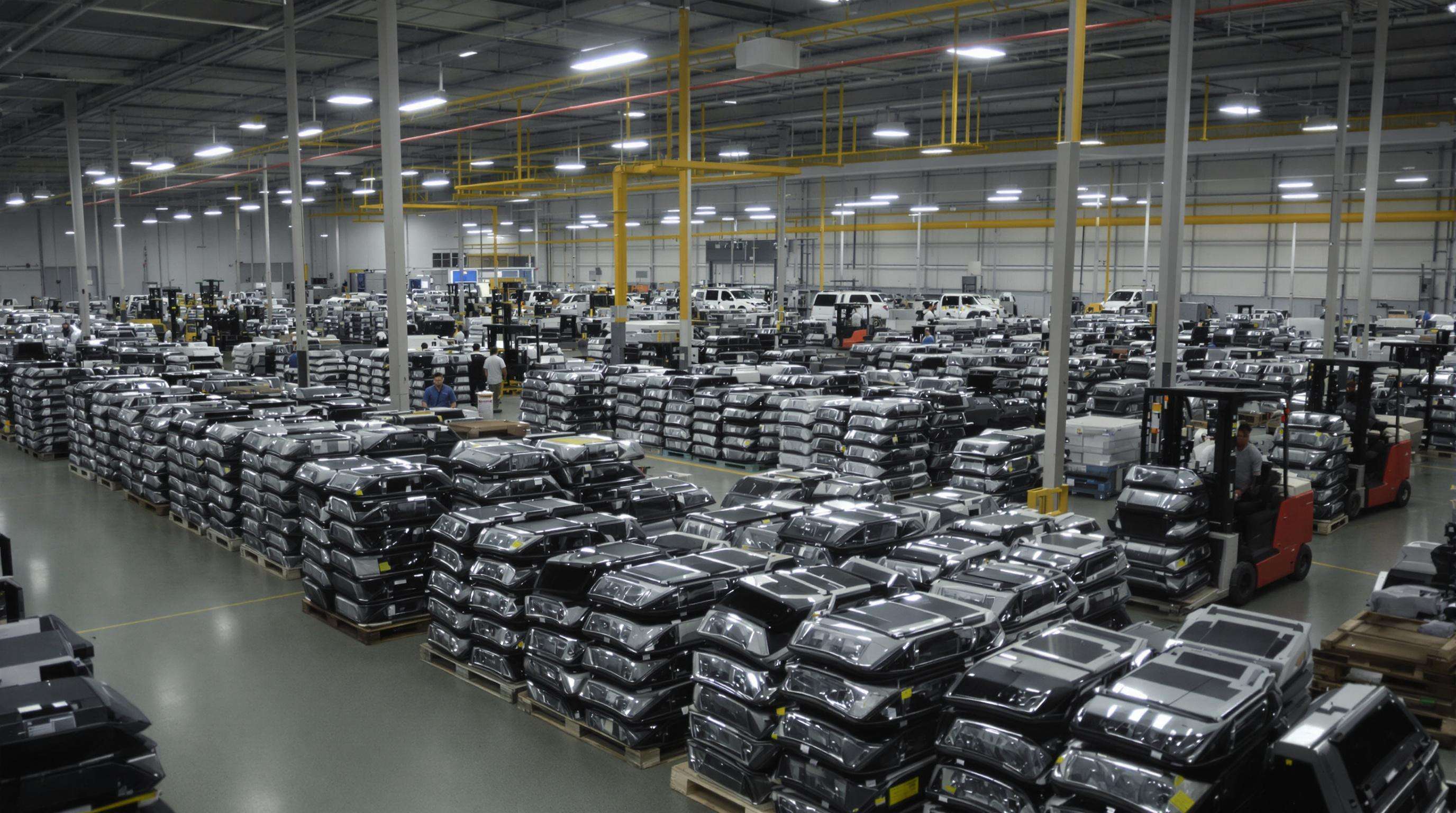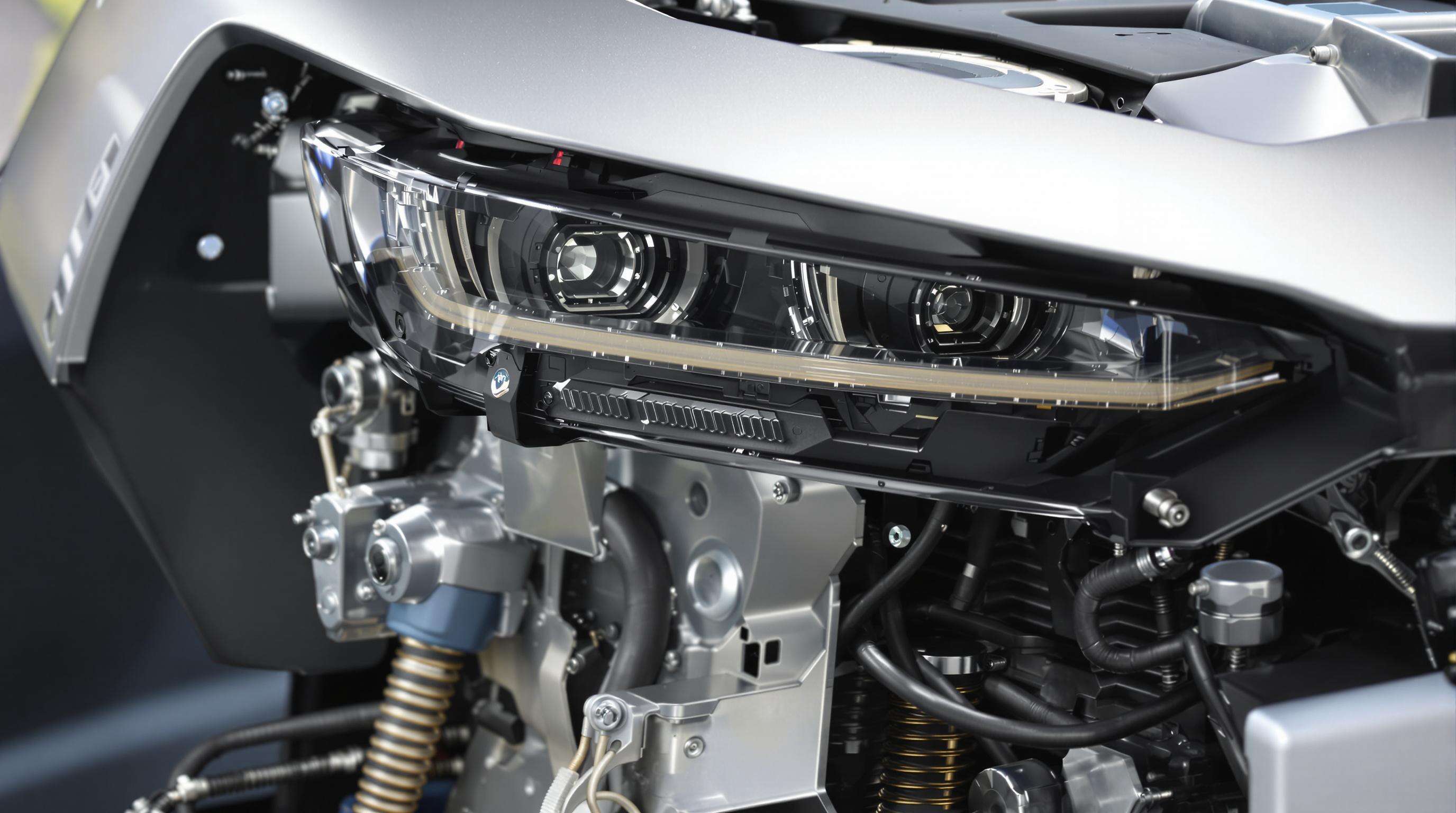אסמבלת מנורות רכב במכירה בקבלה: אסטרטגיות קנייה בכמויות למפקחי רכב
התפקיד של אסמבלת מנורות רכב במכירה בקבלה בשרשרת האספקה האוטומotive המודרנית
התפקיד של אסמבליות מנורות רכב בשרשרת הייצור המודרנית של רכבים
מנורות רכב כבר אינן נועדות רק לתאורה. הן הפכו לתכונות ביטחון מורכבות המשולבות בעיצוב הרכבים כיום. מונעות מודרניות כוללות רכיבים כמו עדשות פוליקרבונט עמידות וכמו גם נורות LED חוסכות האנרגיה שרואים כיום בכל מקום. על הנורות לעבור מבחני בטיחות פדרליים קפדניים, אך גם לסייע בהפחתת התנגדות האוויר של הרכב. יצרני רכב גדולים מבקשים בפוע נוכחי את מערכות המנורה המורכבות מאחר שהן מפחיתות את הקושי בהתקנה. חלק מ막בי היצור מציינים ירידה של 40% בערך בזמן ההתקנה בעת מעבר למרכיבים נפרדים למערכות משולבות אלו. יש הגיון בכך, שכן מדובר בחיסכון הן בזמן והן בכסף בשורות הייצור בכל הענף.
איך רכישה בכמויות ותיאום עם ספקים תורמים לייעול שרשרת האספקה
כאשר יצרני רכב משלבים את קנייתם של מנורות רכב בكمיות, הם יכולים להתאים בצורה טובה יותר את זמני הייצור שלהם למה שזמין באמת אצל הספקים, וכך לחסוך 15 עד 25 ימים של זמני המתנה בכל שנה. הצורך בגישה זו גדל במהירות, שכן שוק התאורה האוטומotive העולמי צפוי לגדול בקצב של כ-12% בשנה עד שנת 2030, בעיקר בגלל המעבר ההמונדי לרכב חשמלי בתקופה הנוכחית. ספקים מרכזיים שמממשים אסטרטגיות קנייה מאוחדות אלו, נוטים לחסוך כ-18% בעלויות אחסון, וכן מתקנים במהירות של כמעט 22% יותר את הבעיות בחלקים פגומים, בהשוואה לאלה שלא משלבים את קנייתם. החיסויים הללו חשובים במיוחד בתעשייה שבה כל יום נחשב, והיעילות היא ההבחנה העיקרית בין רווח להפסד.
תובנה מתוך נתונים: 68% מהספקים מהדרגה ראשונה סולקים על קנייה מאוחדת של מונורות
לפי בחינה עדכנית מ-2023 של מה שמנהלי קנייה בענף הרכב עושים כרגע, יותר משני שלישים מהם החלו להשיג את אסימוני הרעפים שלהם באמצעות contrats גדולים במקום לבצעת הזמנות קטנות פה ושם. החברות ששינו קודם לכן שמו לב לתופעה מעניינת - שרשרת האספקה שלהן חוותה בעיות ב-31 אחוז פחות מקרים. למה? מכיוון שכשמבקשים מהספק הראשי בלבד, הספקים בונים קו ייצור מיוחד עבור לקוחות שקונים בכמויות גדולות. אך יש כאן נקודה שстоיה להזכיר. כ-42% מהמשתתפים בסקר ציינו נתקלים בבעיות של בקרת איכות ברגע שההזמנות השנתיות שלהם עוברות את סף ה-50,000 יחידות. זה הגיוני, מכיוון שקשה לשמור על רמות גבוהות כשכמות הגדלה באופן דרמטי.
אסטרטגיות בסיסיות לרכישת מטענים בצריכה מיטבית של אסימוני רעפים לרכב

הנאה מהגדלת קנה מידה ברכישת "אסימוני רעפים לרכב"
כאשר ספליירים אוטומotive מצליחים להפחית עלויות ב-15 עד 20 אחוז רק על ידי רכישות בכמויות, זה באמת מראה איך תופעת הסקאלה פועלת בפועל. קנייה מרכזית של כל החלקים הסטנדרטיים האלה מפחיתה את עלות הייצור וה доставка של כל יחידה, במיוחד כשהחלקים האלה משמשים בדגמים שונים של רכבים. תחקיר שפורסם בדו"ח שרשרת האספקה האוטומotive לשנת 2023 מגלה גם הוא עובדה מעניינת – חברות שרכשות מעל 10,000 יחידות בשנה מדווחות על 18 אחוז פחות פגומים בהשוואה לכאלה שמבצעות הזמנות קטנות יותר. זה הגיוני, מכיוון שרכישות גדולות מאפשרות שליטה טובה יותר באיכות לאורך כל תהליך הייצור.
שילוב של "שיטות קנייה אסטרטגיות" כדי למקסם את תיקים של ספליירים
יצרנים גדולים מתמודדים עם בעיות בשרשרת האספקה על ידי שיקור קשרים קרובים עם שלושה עד ארבעה יצרני רכיבי תאורה מוסמכים. הגישה הזו עובדת מכיוון שהיא מביאה להם מחירים טובים, ועדיין יש להם אפשרויות גיבוי כשהחלקים נדלים באזורי מסוימים. רוב החברות מסדרות את הספקים שלהן ברמות שונות, כאשר עדיפות מוחלטת ניתנת לאלה עם תעודת ISO ויכולים לספק את החלקים ממש כשנדרש. מערכת כזו מסודרת מקצרת משמעותית את זמני ההמתנה. חלק מהמחקרים מצביעים על ירידה של 22 אחוז בזמנים בהשוואה לרכישות מהספק הזול ביותר ברגע נתון. זה הגיוני, הרי אף אחד לא רוצה שהייצור ייעצר בגלל שחלק אחד בעיכוב.
איזון בין עלות לאיכות: האתגר הכפול בקניות בכמויות
כאשר מסתכלים על התחום האוטומotive, קיים יחס של 7 ל-1 בין עלות לאיכות במונח של אסימבל פנסים, וזה מדגיש היטב מה קורה כשחברות מרכזות יותר מדי על קבלת صفقة טובה. רכישות בכמויות עשויה להיראות מפתה עם חיסכון של 30 עד 40 אחוזים כבר בהתחלה, אך על הספקים להבטיח בדיקות איכותיות של החומרים כדי למנוע בעיות עתידיות כמו סגולה למים, תפוקת אור, או היכולת של הרכיבים להתמודד עם חום. מבחנים אחרונים שבוצעו על ידי מעבדות מחוץ לחברה הראו שבדיקת ההזמנות בכמויות יכולה להפחית את תביעות האחריות ב-35% בערך. מחקרים משנת 2024 על שליטה באיכות תומכים בכך, אם כי נראה שאיש אינו מדבר על הזמן הנוסף שבדיקות אלו דורשות.
הפארדוקס התעשייתי: ביקוש עולֶה מול לחץ על כושרת הייצור של הספקים
למרות התחזית של עלייה של 18% בביקוש העולמי לאסימבל פנסים עד 2026, 57% מהספקים בדרגה השנייה מציינים כי כושרת הייצור שלהם נמוכה מ-80%. קונים מתקדמים פותרים זאת על ידי:
- אלגוריתמי תחזית הביקוש חיזוי צרכים של רכיבים 6–9 חודשים מראש
- סעיפי חוזה גמישים מאפשרות התאמת כמויות הזמנה ב-±15%
- תכניות שותפויות בהשקעה שדרוג קווי ייצור של ספקים لقدرات אורות ראש מטריצה LED
התאמה אסטרטגית זו עוזרת לייצרני רכב לשמור על קצב ביצוע הזמנות של 98% ומעלה גם בתקופות תנודתיות בשוק.
בנייה של אמינות ספקים ושותפויות ארוכות טווח במבצעי מכר wholesale
הערכת יציבות הספק לספקים עקביים של "הרכבת מנורות רכב למכירה"
ספקים אוטומotive שמקדמים קנייה בכמויות חייבים להעריך ביתר קפדניות את יציבות הvendors. סקר שרשרת האספקה האוטומotive מ-2023 חשף כי 43% מהעיכובים ברכש נובעים מספרקאות שאינן מאומתות, חסרות תעודות ISO או הוכחת פירוק הון. מדדי הערכה עיקריים צריכים לכלול:
- ביקורות פיננסיות על פני 5 שנים
- פרוטוקולים לשיקום לאחר אסונות עבור קווי ייצור קריטיים
- מינימום 90% דירוגי משלוח בזמן על פני 24 חודשים
בניית שותפויות לטווח ארוך כדי להפחית את סיכוני ה"הזזת הזמנות"
תנודות עונתיות בדרישה ליחידות תאורה לרכב בwhole sale יוצרות בעיה של סחרור מלאי בשווי 14 מיליארד דולר בשנה בתחום האוטומotive (מקינזי 2023). שותפויות אסטרטגיות עם ספקים מאפשרות מערכות תחזית משותפות שמפחיתות את נזקי הזמנת תנודות ב-27% באמצעות:
- דרכי פעולה ל-12 חודשים שפותחו בשיתוף
- פרוטוקולים להتصעויות בשרשרת האספקה
- סקירות תפעול רבעוניות עם מדדי תפעול משותפים
מקרה לדוגמה: כיצד ספק ביניים הפחית את זמני השבתה ב-30% באמצעות שיתוף פעולה עם ספקים
ספק אירופי מהדרגה שנייה הצליח להשיג את מטרות המשלוחים בזמן שלו עבור מודולי אורות ראש LED לאחר שהטיל סדנאות הכשרה משותפות עם שלושה שותפים עיקריים לייצור. החברה השקיעה כ-2.7 מיליון דולר בפרויקט זה, מה שהפחית את עצירות קו הייצור החודשיות ב-73 שעות בממוצע כל חודש. הם הצליחו בכך באמצעות בדיקות איכות מזוהות בסטAGES השונים, וכן יישום מעקב בבלוקצ'יין עבור המשלוחים, כך שכל אחד יכול היה לראות היכן כל החלקים בכל עת. מה שאנחנו רואים כאן הוא ראייה ברורה ומובילה לכך שכאשר ספקים עובדים יחד בצורה צמודה ולא רק מבצעים עסקאות, הם נוטים להצליח הרבה יותר בעולם התחרותי של תאורה אוטומotive WholeSale.
ניהול עלויות והערכת ערך כולל ברכישת מנורות רכב
יישום מסגרות של "ניהול עלויות ברכישת רכב" לרכישת מנורות
ספקים של חלקים לאוטומובילים מתחילים ליישם אסטרטגיות קנייה של חברות גדולות כשמבקשים רכזת מפצעים לאוטו, משהו ששבעים וחמישה אחוז מהמקנים המובילים כבר אימצו, על פי נתונים עדכניים מהתעשייה שפורסמו ב Automotive Sourcing Quarterly. הגישה החדשה בודקת הרבה יותר מאשר רק את עלות כל יחידה. הם בודקים אם החלקים תואמים את מכונות היצור בפיצריה, האם הם עומדים בכל חוקי המכס המורכבים למשלוחים ברחבי העולם, וכמה מהר הספקים מגיבים כשמופיעים קשיים טכנולוגיים. כמה יצרני רכב גדולים טוענים ש저חו בערך 14 אחוז בעלויות התאורה שלהם לאחר המעבר לשיטה זו. אך כדי להשיג תוצאות טובות, כולם חייבים לשבת על אותו עמוד – בין מחלקת הקנייה, המהנדסים שמעצבים את המוצרים, ואנשי הביקורת האיכותית שודאים שכל הדברים עומדים בסטנדרטים.
עלות הכוללת: מעבר למחיר היחידה במבצעי הספקה
ההעברה ממיקוד במחיר למכרזים המנוהלים על פי ערך משנה את דרכי הסחר ברכישות מונעת של מנורות. רכיבי עלות כוללים:
| גורם | משקל נפוץ | מגיני עלויות חבויים |
|---|---|---|
| אינטגרציה לייצור | 35% | דרישות לשדרוג |
| תביעות אחריות | 28% | שיעורי כשלון חותמים |
| ציות לחוק | 22% | עיכובים באישורים אזוריים |
מחקר ייצור מהשנה 2023 הוכיח כי ספקים המשתמשים בדגם העלות הכולל הצליחו להפחית את הוצאות הלאה מזוהות בתחום התאורה ב-19% בהשוואה למקrazierים המבוססים על מחיר.
ניתוח סכסוך: האם ספקים זולים פוגעים בסטנדרטים לבטחה?
המגמה עוררת סקרנות growing scrutiny סביב הקשר בין קיצוץ עלויות קיצוני לבין ביצועי בטחה. בעוד 62% מהרכיבי LED בקטגוריה המחירים הבסיסית עונים על סטנדרטים רגולטוריים בסיסיים (NHTSA 2023), רק 34% מהן עוברות מבחני עמידות מתקדמים המשקפים תקופת חיים של 10 שנים לרכב. הפער הזה מעורר ויכוחים סביב שינוי תקנות האחריות ותקני בדיקת התנגשות עבור רכיבי תאורה.
מגמות עתידיות והתאמה אסטרטגית בשווקיWhole Sale Car Lamp Assembly

כלי רכב חשמליים וה מורכבות הגוברת של עיצובי רכיבי תאורה
בזמן שרכבי הרכ"ד הופכים לנגישה נפוצה בדרכים שלנו, יצרני רכבים מחליפים לחלוטין את הדרך בה הם מוסקים ומארגנים את האורות הקדמיים. רוב יצרני הרכב רוצים שהאורות שלהם יהיו קטנים ב-15 אחוז לעומת מודלים מסורתיים, מכיוון שאיחוי הדק מקטין את ההתנגדות ומחוסכת באנרגיה. מערכות האור הקדמיות ברכ"ד כוללות תכונות קירור מיוחדות כדי לנהל את כל החום שנפלט מהסוללות. ואל תישכחו גם מהמערכים האדפטיביים המתקדמים של דיודות האור – על פי מחקר פונמון מהשנה שעברה, כ-43% מהרכ"ד ההזמנות מגיעות עם מערכים אלו. גם דרישות הבטחה הפכו קשות בהרבה כאשר מדובר במערכות מתח גבוה בתוך רכבים אלו. זה דחף את החברות להשקיע רבות בפיתוח של חלקים קלים יותר שעדיין יכולים לעמוד בדרישות בדיקה קפדניות מבלי להקריב ביצועים.
לחצי סביבתיים מובילים להקלה על מקורות חומרים ניתנים لإיחוי
החוקים הופכים לקשורים יותר לייצרני חלקי רכב בימינו. שווקים מרכזיים דורשים כעת לפחות 30% ועד אולי 50% חומרים מחזוריים באספה קלילה זו. חברות הרכב מתרחקות מחומרים ישנים של פוליקרבונט לקראת פלסטיקים ביולוגיים חדשים. הבשורה הטובה היא שהחלפה זו מצמצמת את פליטת הפחמן לאורך שרשרת האספקלה ב-18%. אך יש כאן בעיה. חומרים ביולוגיים אלו אינם עמידים מספיק כאשר החום או הקור הופכים קיצוניים. על פי דוח עדכני משנת 2024 של Automotive News, כשני שליש מהספקים מהשורה הראשונה החלו כבר לעבוד עם שותפים המחזקים כדי להשיג את היעדים הירוקים תוך שמירה על תקן בבדיקות התאונה החשובות.
תחזית: צמיחה שנתית ממוצעת של 12% בדרישה עולמית למערכות תאורה מתקדמות עד שנת 2030
המספרים מספרים סיפור מעניין על טכנולוגיית תאורה אדפטיבית, ומציגים צמיחה שנתית מצטברת של כ-12% עד שנת 2030. מה גורם לכך? ובכן, החוקים החדשים שבעניין מכוניות המשוחחות עם כל שאר הרכיבים על הכביש מהווים הבדל גדול. בהסתכלות על התמונה הרחבה יותר, שוק התאורה האוטומotive עומד נכון להיום על כ-31.45 מיליארד דולר, והרבה מהבאים מכאן מתרחש בשתי תחומים ספציפיים – פנסים מבוססי לייזר ופנסים אחוריים מסוג OLED שאנו ממשמעים עליהם שוב ושוב. ספקים שמבקשים להישאר רלוונטיים כבר מתקשים להסתגל ליחידות האופטיות הקטנות הללו. ואם זה לא היה מספיק, חל גם קפיצה במספר הפטנטים. מספר הפטנטים בטכנולוגיית קרן מטריצה ללא הבזק גדל ב-22% בכל שנה לאחרונה, מה שמרמז לנו שמישהו שם החוצה דוחף את הגבולות של חדשנות.
שאלות נפוצות
מהן ההטבות בשימוש באספה של פנסים מובנים ברכב?
אסמבליות תאורה שלמות ברכב מפשטות את תהליך הייצור על ידי הקטנת זמן ההתקנה ב-40%, ובכך חוסכות כסף וזמן לייצרנים, תוך שיפור עיצוב הרכב עבור אירודינמיקה.
איך מדיניות רכישות בכמויות משפיעה על יעילות שרשרת האספקה?
רכישות בכמויות מאפשרות לייצרני רכב להזמין את תהליכי הייצור שלהם עם מלאי הספקים, ובכך להפחית באופן משמעותי זמני המתנה, לחסוך בעלויות אחסון, ולמזער חלקים פגומים באמצעות אסטרטגיות רכישה מוסכמות.
מהן האתגרים בשמירה על איכות בהזמנות בכמויות גדולות?
בזמן שמכסיות שנתיות עולות על סף 50,000 יחידות, 42% מהמשיבים מתקשים בפיקוח על האיכות. שיקום תקני גבוהים הופך לקשה יותר עם הכמויות הגוברות, ודורש בדיקות איכות מתקדמות.
איך תופעת דמיון בקנה מידה משפיעה על רכישת אורות רכב במכירה בקבוק?
כלכלה של פתרונות בקנה מידה מאפשרת לספקים בענף הרכב להפחית עלויות ב-15%-20% באמצעות רכישות בכמויות, ובכך להבטיח שליטה טובה יותר באיכות ופחת תקלות בתהליך הייצור.
מדוע חומרים ברתים חשובים ביצור מנורות רכב?
לפי דרישות שווקים מרכזיים, ישנה עלייה בשימוש בחומרים ברתים, במטרה להגיע ל-50% תוכן מחזור בקומפוננטות המנורה. פעולה זו מפחיתה פליטת פחמן ותומכת במגמה בתעשייה לאמץ פרקטיקות ידידותיות לסביבה.

